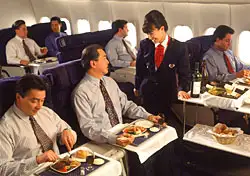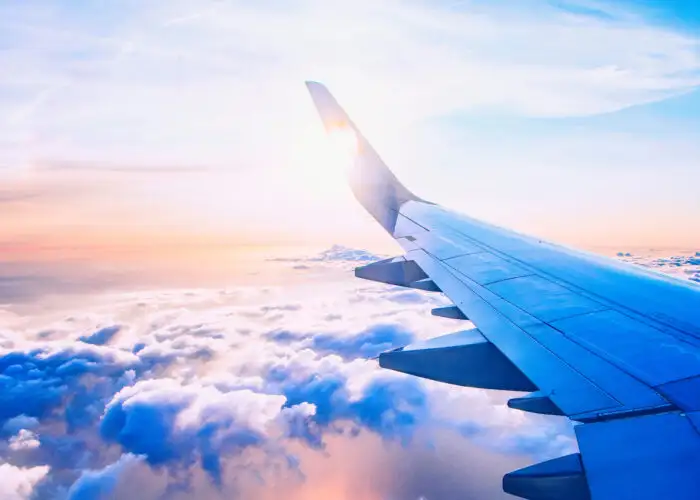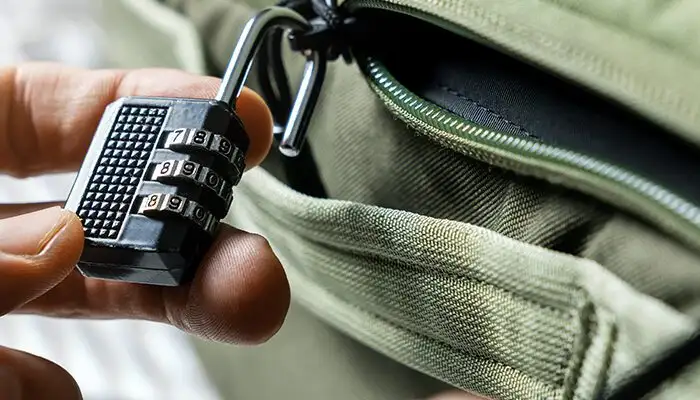
There has never been a better time to fly first class—or a worse time. Planes are packed, filled on average to 80 percent of capacity, which means that comfort is in short supply.
Remember when the claustrophobia of coach was mitigated somewhat by the ready availability of empty middle seats? In the current era, a vacant middle seat is the exception rather than the rule. Comfort levels have eroded accordingly.
Against that cramped, dreary backdrop, a comfy seat, with plenty of elbow and leg room, has never been more welcome. Those roomy seats can only be found in the first-class cabin (or in business class, in those few cases where it’s offered on domestic flights).
Even as the allure of first class has heightened, the airlines have cut back on the number of first-class seats in their desperate attempts to align capacity with consumer demand. Wide-bodies have been replaced by single-aisle aircraft, and narrow-bodies have given way to regional jets. With each such downgrade, the number of first-class seats has decreased, both in absolute terms and as a percentage of the airlines’ overall seats.
How can comfort-seekers snag one of those big seats without taking out a second mortgage to finance the expenditure? Generally speaking, there are three ways to get to the front of the plane.
Just pay cash
The old-fashioned approach is simply to buy a first-class ticket. With prices ranging from over $1,000 to more than $4,500 for a coast-to-coast round-trip, most consumers can’t justify the expenditure. Indeed, it’s tough to rationalize spending between three and 10 times more for first class than for coach, just for a few fleeting hours of extra comfort and a better meal.
This outlook explains why so few travelers purchase these high-priced tickets. While the airlines refuse to disclose the breakdown between full-revenue passengers and those who have upgraded to first class, my unscientific surveys suggest that perhaps 10 percent of those sitting up front paid the full published fare for the privilege.
Those flying across the Atlantic to Europe can consider another option: business-class-only carriers such as Eos (flying between New York and London Stansted), Maxjet (also serving Stansted from several U.S. airports), and PrivatAir (serving Munich and Dusseldorf from Newark and Chicago). These airlines have only one class of service, comparable to the business- or first-class accommodations of traditional airlines. The good news for flyers paying their own way is ticket prices on these carriers are closer to business class than to first, making flights a relative bargain.
The mileage upgrade
A more affordable route to first class is to combine cash and miles by purchasing a coach ticket and redeeming frequent flyer miles to upgrade to first.
Using fares available for flights between Los Angeles and New York as an example, I found that advance-purchase coach tickets cost between $228 and $688, with the majority clustering around the $350 mark. In most programs, an upgrade from a discounted coach ticket to first class (or to business, if it’s a three-cabin jet) costs 10,000 to 15,000 miles each way, or 20,000 to 30,000 miles round-trip.
Is it worth it? I don’t have a definitive answer, but there are several ways to think about the issue.
When you upgrade with miles, you’re essentially spending those miles in exchange for a seat that would normally cost from $400 to $4,000 more than was actually paid. Redeeming 20,000 miles for an upgrade to a seat worth $4,000 more than the purchased coach seat would yield a per-mile value of 20 cents each. Since the current rough-and-ready valuation of a frequent flyer mile is between one and two cents, the upgrade scenario can look awfully attractive. Bear in mind that that calculation assumes that the price of a first-class ticket fairly reflects its value. Many consumers are skeptical that a first-class seat is worth 10 times more than its coach counterpart.
Another consideration is that the miles required to upgrade could also be used for a free coach round-trip. Flyers must determine whether it’s better to use the miles to upgrade an upcoming trip or to get a free trip sometime in the future.
Finally, there’s the elusive value of comfort. How much is it worth to have more personal space for the limited duration of an airline flight? Different flyers will have different assessments, but most would agree that the longer the flight, the more important comfort becomes and the greater its value.
The elite upgrade
The third route to the first-class cabin is via loyalty—attaining elite status in the airlines’ mileage programs and receiving upgrades as an elite benefit.
The story of the elite route to upgrades is an old one, but it does have a new wrinkle. In the past, attaining entry-level elite status was sufficient to guarantee a reasonably steady supply of upgrades. That was before the airlines cut back on the supply of first-class seats.
Today, would-be upgraders don’t set their sights on mere silver status, typically awarded after logging 25,000 elite-qualifying miles; they aim instead for gold or platinum status, requiring 50,000 or 100,000 miles. They know that with higher-level elite status come better odds of receiving an upgrade. The higher-level elites can book their upgrades further in advance, so they’re guaranteed better access to a very limited supply of first-class seats.
Is first class in your future? Maybe. While first-class seats are harder than ever to come by, they still can be had. But snagging those coveted seats won’t be easy, and it certainly won’t be cheap.
We hand-pick everything we recommend and select items through testing and reviews. Some products are sent to us free of charge with no incentive to offer a favorable review. We offer our unbiased opinions and do not accept compensation to review products. All items are in stock and prices are accurate at the time of publication. If you buy something through our links, we may earn a commission.
Related
Top Fares From
Today's Top Travel Deals
Brought to you by ShermansTravel
Shop and Save with Country Inns...
Patricia Magaña
 Hotel & Lodging Deals
Hotel & Lodging Deals
$229 -- Chicago: Discounted Rates and...
Francesca Miele
 Hotel & Lodging Deals
$229+
Hotel & Lodging Deals
$229+
$188 -- Honolulu: Save on Oceanview...
Abigail Lamay
 Hotel & Lodging Deals
$188+
Hotel & Lodging Deals
$188+






